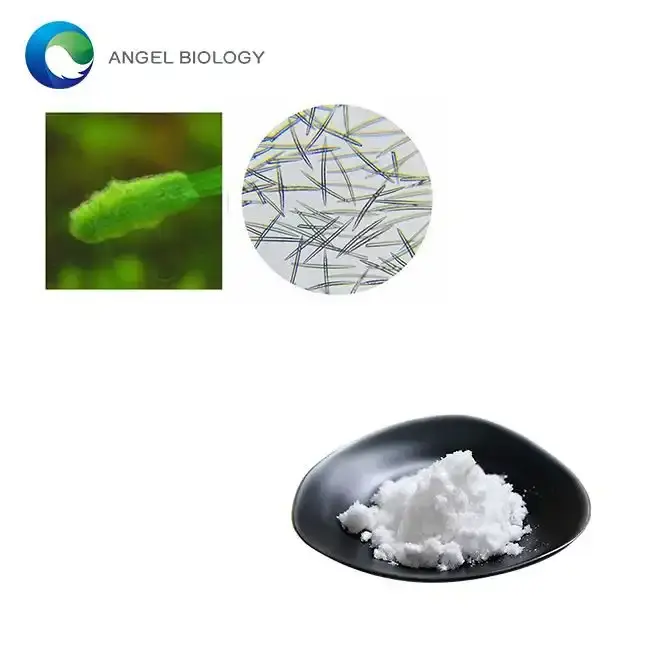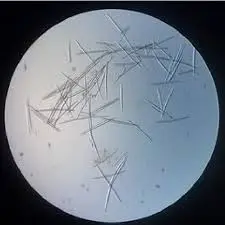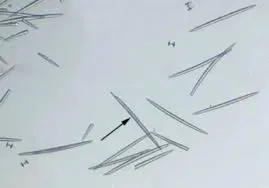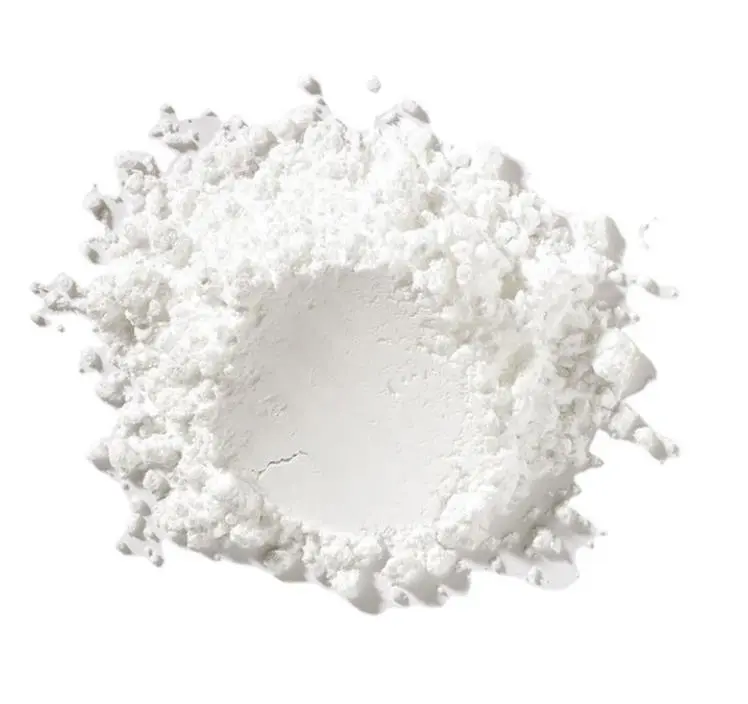What is a Sponge Spicule?
Sponge spicules are microscopic, needle-like structures found in most species of sponges. These tiny skeletal elements play a crucial role in the structural support and defense mechanisms of these ancient aquatic organisms. Composed primarily of silica or calcium carbonate, sponge spicules come in a variety of shapes and sizes, each uniquely adapted to the specific needs of the sponge species they belong to. Understanding these fascinating structures provides valuable insights into the biology, evolution, and ecological importance of sponges in marine and freshwater ecosystems.

Sponge Spicule
Other Name: Hydrolyzed Sponge
Specifications: 70%, 95%, 99%
Certifications: ISO9001, Kosher,Halal, FDA, IFEAT
Packing Size: 25kg/drum
Delivery Terms: EXW, FOB, CIP, CIF, DAP
Transportation: Courier, Air, Ocean
Payment Terms: T/T preferred
Delivery: Ready stock, Prompt and Secure Shipment
Free Sample: Available
OEM/ODM: Available
MOQ: 1kg
Discount for large orders
Not for Private Person Sale
How Do Sponge Spicules Form?
The formation of sponge spicules is a complex and highly regulated process that occurs within specialized cells called sclerocytes. These cells are responsible for the biosynthesis and shaping of spicules, which begins with the secretion of an organic matrix composed mainly of proteins and polysaccharides. This matrix serves as a template for the deposition of mineral material, either silica or calcium carbonate, depending on the sponge species.
In siliceous sponges, which make up the majority of sponge species, the process of spicule formation involves the polymerization of silicic acid. This is facilitated by enzymes called silicateins, which catalyze the condensation of silica molecules into an amorphous, glass-like structure. The organic matrix guides the growth and shape of the spicule, with different proteins influencing the final morphology.
For calcareous sponges, the process is somewhat different. These sponges use calcium carbonate to form their spicules, typically in the form of calcite crystals. The formation of calcareous spicules involves the precipitation of calcium carbonate from seawater, which is then deposited onto the organic matrix.
The shape and size of spicules are genetically determined and can vary greatly between species. Some common shapes include simple rods (monaxons), three-rayed (triaxons), and four-rayed (tetraxons) structures. The diversity of spicule morphology is astounding, with some species producing elaborate and intricate forms that resemble stars, anchors, or even miniature chandeliers.
As the spicules grow, they are transported from the sclerocytes to their final position within the sponge body. This placement is critical for providing structural support and, in some cases, contributing to the sponge's defense mechanisms. The arrangement of spicules within the sponge tissue can create a complex network that helps maintain the organism's shape and provides stability in the face of water currents and other environmental pressures.
Understanding the formation of sponge spicules is not only crucial for comprehending sponge biology but also has potential applications in materials science and bioengineering. The natural process of biosilicification observed in sponges has inspired researchers to develop novel biomaterials and explore applications in nanotechnology and tissue engineering.

What Are The Functions Of Sponge Spicules?
Sponge spicules serve multiple essential functions that contribute to the survival and success of these ancient organisms in aquatic environments. The primary roles of spicules can be categorized into structural support, defense, and environmental adaptation.
Structural Support:
One of the most crucial functions of sponge spicules is to provide structural integrity to the sponge body. Unlike many other multicellular organisms, sponges lack true tissues and organs. Instead, they rely on a network of spicules embedded in a collagenous matrix to maintain their shape and resist the forces of water currents and gravity. This skeletal framework allows sponges to grow into various forms, from simple encrusting sheets to complex, branching structures.
The arrangement of spicules within the sponge body is often highly organized, creating a scaffolding that supports the soft tissues and maintains the internal canal system essential for water flow and feeding. In some species, larger spicules called megascleres form the primary skeletal elements, while smaller microscleres fill in the gaps and provide additional reinforcement.
Defense Mechanisms:
Spicules play a significant role in the defense strategies of many sponge species. Their sharp, needle-like structure can deter potential predators by making the sponge unpalatable or difficult to consume. Some sponges can even project their spicules outward when disturbed, creating a formidable barrier against attackers.
In addition to physical deterrence, certain sponge species incorporate toxic compounds into their spicules, further enhancing their defensive capabilities. This chemical defense, combined with the mechanical protection offered by the spicules, makes many sponges less attractive targets for predators in marine ecosystems.
Environmental Adaptation:
Sponge spicules also contribute to the organism's ability to adapt to various environmental conditions. The size, shape, and arrangement of spicules can influence the sponge's interaction with its surroundings in several ways:
1. Substrate Attachment: Some spicules are specialized for anchoring the sponge to various substrates, allowing them to colonize different habitats from rocky seafloors to soft sediments.
2. Water Flow Regulation: The arrangement of spicules can affect water flow through the sponge's body, optimizing its filter-feeding efficiency and gas exchange.
3. Light Manipulation: In some species, particularly those living in deeper waters, spicules may help to scatter or channel light, potentially benefiting symbiotic photosynthetic organisms living within the sponge tissues.
4. Buoyancy Control: The density and distribution of spicules can influence the sponge's overall buoyancy, allowing some species to maintain their position in the water column more effectively.
Ecological Importance:
Beyond their direct functions for the sponge, spicules also play significant roles in marine ecosystems. When sponges die and decompose, their spicules can accumulate in marine sediments, contributing to the formation of unique habitats. These spicule mats can provide substrate for other organisms to colonize and may influence local sediment characteristics.
Furthermore, the study of fossil spicules has been invaluable in understanding the evolution and paleoenvironment of ancient marine ecosystems. The resilience of siliceous spicules to degradation makes them excellent candidates for long-term preservation in the fossil record.
How Are Sponge Spicules Used In Scientific Research?
Sponge spicules have become increasingly important in various fields of scientific research, offering unique insights into marine biology, ecology, evolution, and even materials science. Their diverse applications stem from their distinctive properties and the wealth of information they can provide about sponges and their environments.
Taxonomy and Species Identification:
One of the primary uses of sponge spicules in scientific research is in taxonomy and species identification. The shape, size, and composition of spicules are often species-specific, providing crucial diagnostic features for classifying sponges. Researchers use microscopy techniques to examine spicule morphology in detail, allowing them to distinguish between closely related species and identify new ones.
This approach is particularly valuable when dealing with preserved specimens or fragmentary remains, where other identifying features may be lost or damaged. The development of spicule atlases and identification keys has greatly facilitated the work of marine biologists and taxonomists in cataloging sponge biodiversity.
Evolutionary Studies:
Sponge spicules offer a unique window into the evolutionary history of these ancient organisms. By studying the morphological changes in spicules over geological time, researchers can trace the evolutionary relationships between different sponge lineages and understand how they have adapted to changing environmental conditions.
The resilience of siliceous spicules to degradation makes them excellent candidates for fossil preservation. Paleontologists use fossil spicules to reconstruct ancient marine ecosystems and track the diversification of sponges through Earth's history. This information is crucial for understanding the evolution of early multicellular life and the development of marine biodiversity.
Environmental Monitoring and Paleoecology:
The composition and distribution of sponge spicules in marine sediments can provide valuable information about past and present environmental conditions. Researchers analyze spicule assemblages in sediment cores to infer changes in ocean chemistry, temperature, and ecosystem composition over time.
In modern contexts, studying the spicules of living sponges can offer insights into the health of marine ecosystems. Changes in spicule morphology or composition may indicate stress responses to environmental factors such as ocean acidification or pollution, making sponges potential bioindicators for monitoring marine health.
Biomaterials and Nanotechnology:
The unique structural and material properties of sponge spicules have attracted significant interest from materials scientists and engineers. The natural process of biosilicification observed in sponges offers inspiration for developing new biomaterials with applications in various fields:
1. Optical Fibers: Some sponge spicules exhibit remarkable light-transmitting properties, prompting research into bio-inspired optical fibers for telecommunications and sensing applications.
2. Nanostructured Materials: The hierarchical organization of silica in sponge spicules has inspired the development of new nanostructured materials with enhanced mechanical properties.
3. Tissue Engineering: The biocompatibility of silica-based materials derived from sponge spicule research shows promise for applications in tissue engineering and regenerative medicine.
4. Catalysis and Sensing: The high surface area and unique chemical properties of synthetic materials inspired by sponge spicules are being explored for use in catalysis and chemical sensing technologies.
Biogeography and Dispersal Studies:
The distribution of sponge species, as indicated by their spicules, can provide insights into marine biogeography and species dispersal patterns. Researchers use spicule data to track the movement of sponge populations over time, helping to understand the factors influencing marine biodiversity and species distribution.
Forensic Applications:
In forensic science, sponge spicules found in soil or water samples can provide valuable evidence in criminal investigations. Their presence can help link suspects or victims to specific aquatic environments, aiding in the reconstruction of events or the identification of crime scenes.
As scientific techniques continue to advance, the applications of sponge spicule research are likely to expand further. From unraveling the mysteries of early animal evolution to inspiring cutting-edge materials, these microscopic structures continue to play a significant role in advancing our understanding of the natural world and developing new technologies.


Angelbio, a collaboration between Angel Holding Group and the Institute of Life and Health Research of Xi'an Jiaotong University, specializes in developing, producing, and selling natural ingredients for various industries such as healthy food, cosmetics, pharmaceuticals, and more. With over 18 years of dedicated R&D and testing, Angelbio prioritizes technology innovation and supply chain integration to deliver high-quality products and services for global health. Committed to meeting international quality standards, Angelbio's factory holds certifications including FDA registration, ISO9001, ISO14001, ISO18001, KOSHER, HALAL, and QS, ensuring compliance with GMP requirements. Additionally, special ingredients exported to the EU market are fully REACH registered. Operating under the philosophy of natural origin and global health, Angelbio focuses on providing stable and top-notch products and services through its research and development laboratory. As a trusted China Sponge Spicule Powder manufacturer, Angelbio invites inquiries and assures dedicated customer service at angel@angelbiology.com.
References:
1. Uriz, M. J. (2006). Mineral skeletogenesis in sponges. Canadian Journal of Zoology, 84(2), 322-356.
2. Ehrlich, H. (2019). Extreme Biomimetics. Springer International Publishing.
3. Müller, W. E. G., et al. (2017). The enzyme silicatein and its application in biosilicification. Chemistry of Materials, 29(2), 542-554.
4. Hooper, J. N. A., & Van Soest, R. W. M. (2002). Systema Porifera: A Guide to the Classification of Sponges. Springer US.
5. Schröder, H. C., et al. (2008). Silicateins, silicase and spicule-associated proteins: synthesis of demosponge silica skeleton and nanobiotechnological applications. Progress in Molecular and Subcellular Biology, 47, 195-222.
6. Cha, J. N., et al. (1999). Silicatein filaments and subunits from a marine sponge direct the polymerization of silica and silicones in vitro. Proceedings of the National Academy of Sciences, 96(2), 361-365.
7. Leys, S. P., & Hill, A. (2012). The physiology and molecular biology of sponge tissues. Advances in Marine Biology, 62, 1-56.
8. Pisera, A. (2003). Some aspects of silica deposition in lithistid demosponge desmas. Microscopy Research and Technique, 62(4), 312-326.
9. Maldonado, M., et al. (2005). Siliceous spicules and skeleton frameworks in sponges: origin, diversity, ultrastructural patterns, and biological functions. Microscopy Research and Technique, 67(3‐4), 146-167.
10. Wang, X., et al. (2012). Sponge biomineralization: structural and mechanical properties of spicules. RSC Advances, 2(30), 11251-11258.


